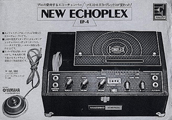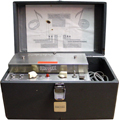DIY: Echoes of the Echoplex

In 1982, I bought a used Maestro Echoplex, old and worn and scarcely functional, at a little music shop in Fairfax, Virginia. The store carried as much used stuff as new, and I paid all of $25 for this battered, little black box displayed under a glass counter. My friend assured me: “You have to get this, trust me.” I didn’t know then what I was going to do with it, but I was pretty sure that I had to buy it before somebody else did.
I spirited the box home, set it up on my bedroom dresser, plugged my Gibson SG into it, and ran the signal to a cassette deck. I hit “record,” held my breath, and struck an open G chord.
You would think I had dropped a grand piano into the middle of the Grand Canyon.
Of course this little sonic wonder was nothing new. The original tube Echoplex, the EP-2, had hit the market in 1961, and had quickly become a recording and live staple. It was followed in the early 1970s by a solid-state unit, the EP-3. Outfitted with a tape cartridge and two tape heads, the Echoplex recorded sound with one head and immediately (or almost immediately) played it back with the second head, producing a delay effect when the two signals were mixed together. The distance between the heads was adjustable, allowing the user to set the length of the delay — that is, the time that elapsed between the performance and its playback.
 While the solid-state version of the Echoplex lacked some of the natural depth and shimmer of the tube original, it became intrinsic to the sounds of such guitarists as Jimmy Page, Joe Walsh, Brian May, Neil Young, and Duane Allman.
While the solid-state version of the Echoplex lacked some of the natural depth and shimmer of the tube original, it became intrinsic to the sounds of such guitarists as Jimmy Page, Joe Walsh, Brian May, Neil Young, and Duane Allman.
Subsequent versions contained more features — input meters, tone controls — but never eclipsed the original’s simplicity, character, and fidelity. For a long time, any Echoplex was considered superior to any non-tape-based delay pedal or rack unit.
Want an Echoplex of your own? No worries. If you don’t mind a little wear and tear (they were coveted, remember), you can occasionally grab one that looks like it’s been through a meat grinder for a thousand bucks or so on eBay.

For those who would like everything old to be new again:
http://www.fulltone.com/products/tube-tape-echo